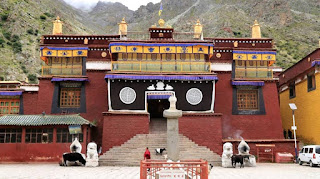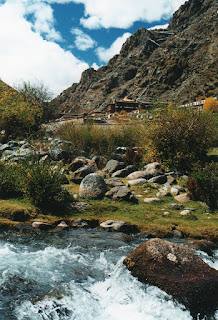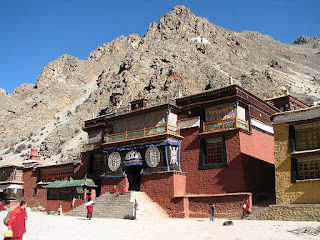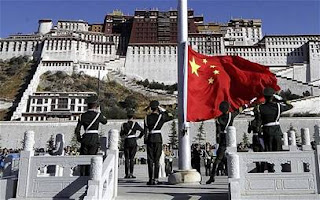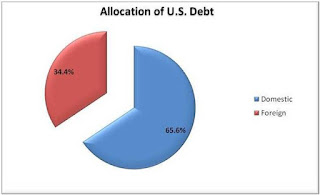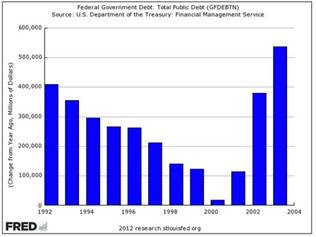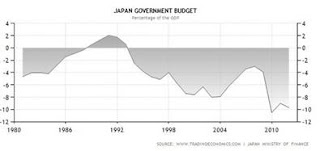Thursday, August 30, 2018
TIBET AWARENESS – A CHARMING WAY TO FIGHT AGAINST THE DEVIL
Monday, August 27, 2018
TIBETAN RESISTANCE MOVEMENT IS NOT ABOUT SEPARATISM
TIBETAN RESISTANCE MOVEMENT IS NOT ABOUT SEPARATISM
On behalf of Living Tibetan Spirits I declare that The Tibetan Resistance Movement is not about Separatism. For centuries, Chinese Emperors ruled over Tibet without physically occupying Tibet. In other words, Tibetans enjoyed full freedom during the centuries of rule by foreigners. Tibetans resist physical occupation of their territories. The issue is not that of separating Tibet from China. The issue is that of evicting the Occupier from Tibetan Soil.
Rudranarasimham Rebbapragada
SPECIAL FRONTIER FORCE
CHINA LEADER CALLS FOR 'ANTI-SEPARATISM EFFORTS' IN TIBET
Clipped from: https://abcnews.go.com/International/wireStory/china-leader-calls-anti-separatism-efforts-tibet-57419831
The Associated Press
FILE - In this Sept. 17, 2014, file photo, an Exile Tibetan woman wears a mask during a protest to highlight Chinese control over Tibet, coinciding with the visit of Chinese President Xi Jinping in New Delhi, India. (AP Photo/Bernat Armangue, File)
A top Chinese leader has called for "advancing anti-separatism efforts" in Tibet, in a sign of continued high-pressure tactics in the Himalayan region.
Wang Yang, the ruling Communist Party's No. 4 ranking official, was quoted Monday in state media as stressing the importance of tight control over Tibet's Buddhist institutions, urging "preparedness and precautions for danger in times of safety."
Religious figures must "be courageous to battle all separatist elements" in the name of preserving national unity and social stability, Wang was quoted as saying in Tibet's regional capital of Lhasa during a visit there on Sunday.
Beijing's forces occupied Tibet shortly after the 1949 communist revolution and security there has been ratcheted up significantly in the decade since anti-government protests spread through Tibetan areas in 2008.
The tactics in Tibet are largely aimed at reducing the influence of the region's spiritual leader, the Dalai Lama, who lives in exile in India. China claims Tibet has been part of its territory for more than seven centuries and regards the Dalai Lama as a dangerous separatist.
Many Tibetans insist they were essentially independent for much of that time.
Wang has broad responsibility for religious policy as head of the government's top political advisory body. In his comments Sunday, he also echoed Beijing's calls for the Sinicization of religion, shorthand for adherence to the dictates of the officially atheist party.
Among recent tightening security measures in Tibet, students were required to sign agreements to "not take part in any form of religious activity" during the summer school holidays.
Young Tibetan monks have also reportedly been forced to leave one of the biggest monasteries in a Tibetan region of western China as part of a drive to replace monastic life with secular education.
Recent months have also seen sweeping crackdowns on traditional Muslim culture among the Uighur ethnic minority group in the northwestern region of Xinjiang and among Christians in eastern China.
Created with Microsoft OneNote 2016.
THE CLINTON CURSE – CLINTON'S IMMORAL SOCIAL SECURITY POLICY
THE CLINTON CURSE – CLINTON'S IMMORAL SOCIAL SECURITY POLICY
Social Security is the largest owner of the US Debt. In 1996, President Clinton amended the Social Security Act of 1945 by approving Public Law 104 – 193. President Clinton made an immoral choice to address the problem of mounting US Debt. His plan to reduce the US Debt by denying the payment of Old Age Retirement Income Benefits to senior alien workers has backfired. God has given His Promise which delivers Blessings when God's Commandments are obeyed. Disobedience of God's Commandments have their own consequences. The Clinton Curse reveals the consequences of President Clinton's corrupt conduct. As of today, the US satisfies the government's need for revenue by borrowing from foreign nations.
Rudranarasimham Rebbapragada
SPECIAL FRONTIER FORCE
WHO OWNS THE MOST U.S. DEBT?
Clipped from: https://www.forbes.com/sites/mikepatton/2014/10/28/who-owns-the-most-u-s-debt/#1557bdf8819c
To satisfy the U.S. government's need for revenue, Washington collects taxes and fees. What happens if this isn't enough? What happens if the federal government needs more? That is the subject of this article in which we'll reveal who owns the most U.S. debt and how much of it is owned by foreign nations. We'll begin by explaining, in simple terms, how the debt market functions.
Debt 101
An individual takes on debt when they finance a new car, house, etc. The U.S. government does so when it issues securities. Specifically, the federal government issues Treasury bills, notes, and bonds. The primary difference is in their maturity. For example, Treasury bills have a maturity less than one year. Treasury notes mature in one to ten years. Treasury bonds have maturities greater than 10 years.
To issue its debt, the government holds periodic Treasury auctions. A successful auction indicates a strong demand for U.S. Treasury securities. If the auction doesn't go well, it means demand for Treasuries is weak. Who owns the most Treasury's?
Owners of U.S. Debt
The largest owner of U.S. debt is Social Security. Since the Social Security system is a government entity, how can the government own its own debt? Good question. This is where the "house of cards" theory resides. Some believe the federal government is merely moving the IOUs from one shell to another, hoping to escape the watchful eye of its citizens. In any event, Social Security owns about 16% of the debt followed by other federal government entities (13%), and the Federal Reserve (12%). How much is owned by foreign governments? The following chart contains the answer.
According to the U.S. Treasury Department, at the end of August 2014, more than a third of the debt was owned by foreign countries (34.4%). The largest foreign holders of U.S. debt were Mainland China (7.2%) and Japan (7.0%). What is the consequence of having such a large percentage of debt held by foreign nations? It depends. It depends on the relationship between the U.S. and the specific foreign country. It also depends on the global interest rate environment. Finally, it depends on the geo-political climate and the degree of fear around the globe. This is the case because when fear rises money flows into U.S. Treasuries which is viewed as a safe place to invest. The percentage of debt owned by countries that are less friendly to America is about 10%. This includes China, several oil exporters (Ecuador, Venezuela, Iran, Iraq, Libya, etc.), and a few others. The worst case would materialize if the largest holders decided to sell their Treasury securities at the same time. This could potentially decrease demand which would push yields higher. If yields rose, the federal government would find it more difficult to service the debt, pushing the deficit higher. If the deficit rose, the total debt burden would accelerate and, unless demand for U.S. debt were to increase, it could get ugly. Will this transpire? It's not too likely. At least not for the foreseeable future anyway.
Conclusion
Given the state of the global markets, the U.S. is still considered to be the best house in a bad neighborhood. Even though more than one third of the debt is owned by foreign nations, as long as there are no safer places to invest, money will find its way here. Therefore, global turmoil would be in the best interest of the federal government. Anything which raises fear will bring money to the Treasury and allay the need for higher taxes. However, one day this unsustainable path we're on will reach its day of reckoning. However, that's probably not any time soon.
Created with Microsoft OneNote 2016.
Saturday, August 25, 2018
REWRITING INDIA, TIBET RELATIONS
Uncalled for: The Dalai Lama should have avoided his controversial remarks on Jinnah-Nehru.
Academic
Basically, the Dalai Lama should have avoided this uncalled for verdict on Jinnah and Nehru because at the time of granting asylum to him, the Government of India clearly conveyed that he and his "government-in-exile" in Macleodganj, Himachal Pradesh, will not indulge in any political activities in India and shall remain confined to religious and cultural activities pertaining to Tibet.
In 1954, India and China signed the "Panchsheel" Agreement, which recognised the Chinese sovereignty over Tibet and Nehru-led India decided to withdraw its military presence from Tibet. However, Tibetans neither recognised nor endorsed the agreement. But by 1957, when it became pretty evident that the PLA's occupation over Tibet was not going to end, Indian and Tibetan leaders approached the next best option — the US.
With the help of the CIA, Tibetan freedom fighters were trained in covert CIA camps and resistance was generated. They supplied arms and equipment to fight the Chinese army. The CIA recruited locals to fight against the Chinese as guerrillas and were airdropped throughout the resistance period. However, the resistance was thrashed by the PLA. Monks and civilians were executed and monasteries bombed, forcing the Dalai Lama and his followers to stealthily cross over to India in March, 1959. China was angered with the Dalai Lama, as also with India for giving asylum to him and other "faulty" policy decisions of forward deployment of troops, which resulted in the 1962 war.
The CIA and the IB helmed the project and a seasoned officer of the Indian Army, Major-General Sudan Singh Uban, was chosen to be the founder Inspector-General of the SFF. Based in Chakrata, Uttarakhand, the force was put under the direct supervision of the Intelligence Bureau, and later, the Research and Analysis Wing (RAW). With an initial strength of 12,000, the SFF commenced six months of training in rock-climbing and guerrilla warfare. The soldiers were recruited with help from political leaders of the Chushi Gangdruk, the original Tibetan resistance warriors. It was primarily raised to address the lack of intelligence during war and peace. With the formation of RAW by the late 60s, and with the help of the Aviation Research Centre (ARC) which provided airlift facilities, the SFF became fully airborne-qualified and a dedicated mountain warfare force.
The SFF commandos can survive in any hazardous conditions. They are tough, hardy, well trained in rock-climbing, para-trooping and skydiving. They proved their mettle in the Bangladesh war. They were valuable for clandestine intelligence collection, training the Mukti Bahini and carrying out several missions, including the destruction of the Kaptai Dam and bridges. They were also part of Operation Bluestar. They carry out clandestine operations but since they are under RAW, information regarding their clandestine operations remains secret.
Against this backdrop, such words coming from His Holiness are unwelcome. However, the 14th Dalai Lama apologised a couple of days later at Bengaluru at a 'thanksgiving' commemorative function of 60 years of Tibetans' life in exile for his remarks, which he said had stirred a controversy.
To overcome his omission, he said, "Jawaharlal Nehru supported both the setting up of Tibetan settlements as well as the creation of Tibetan schools, so that our culture and language could be preserved."
During the 1959 Tibetan uprising, the Dalai Lama fled to India. After the founding of the government-in-exile, Nehru settled the approximately 80,000 Tibetan refugees who followed him into exile.
The Dalai Lama is the spiritual leader of the Gelug school of Tibetan Buddhism. The Kagyu Karmapa is the spiritual leader of the Karma Kagyu school of Tibetan Buddhism. Interestingly, the current 14th Dalai Lama helped the young and controversial 17th Kagyu Karmapa after he escaped from China in 1999 following the same route the Dalai Lama took in 1959. The recognition of the 17th Karmapa has been a subject of controversy since two candidates have been put forward: Ogyen Trinley Dorje (OTD) and Trinley Thaye Dorje.
Intelligence agencies promote stories about OTD seeking asylum in the US, trying to buy land to settle down there or even returning to China. Last year, he promised to return by November, 2018.The controversy of both the Karmapas can be resolved only with the blessings of the Dalai Lama who before the time of incarnation should declare the real 17th Karmapa for Tibetan unity and support for his successor.
Friday, August 24, 2018
THE CLINTON CURSE – THE US ECONOMY ON A SLIPPERY SLOPE






"The system wanted it."
"The fear was that there wasn't going to be any.... There was no bill auctions."
"The brokers were calling up ma & pa and said there are no more T-Bill auctions!"







